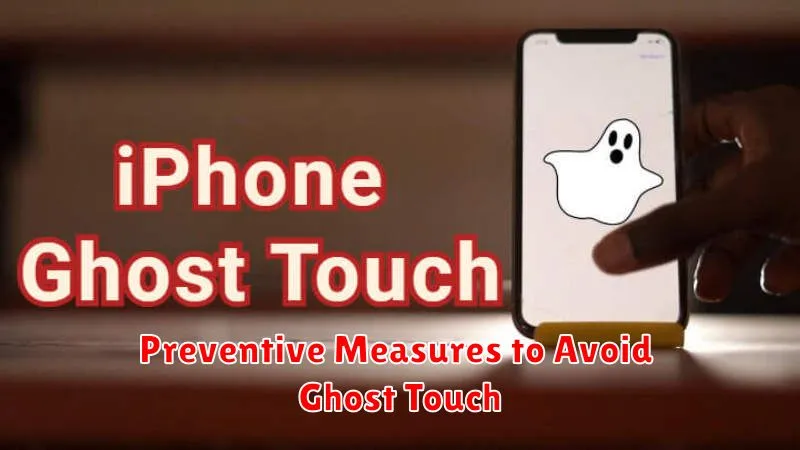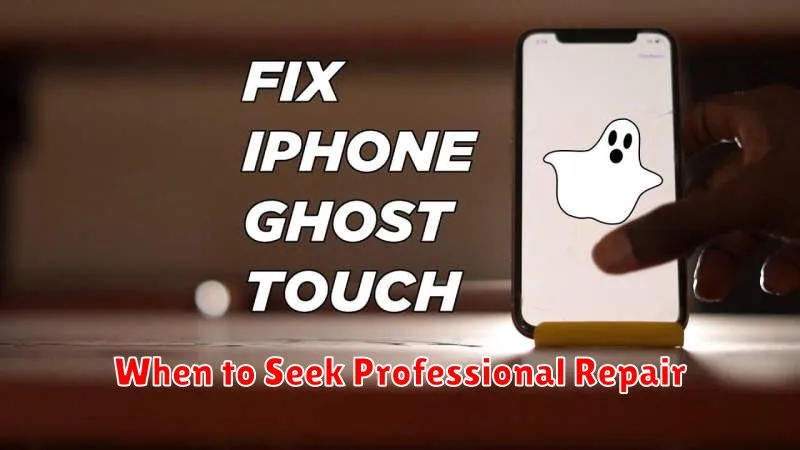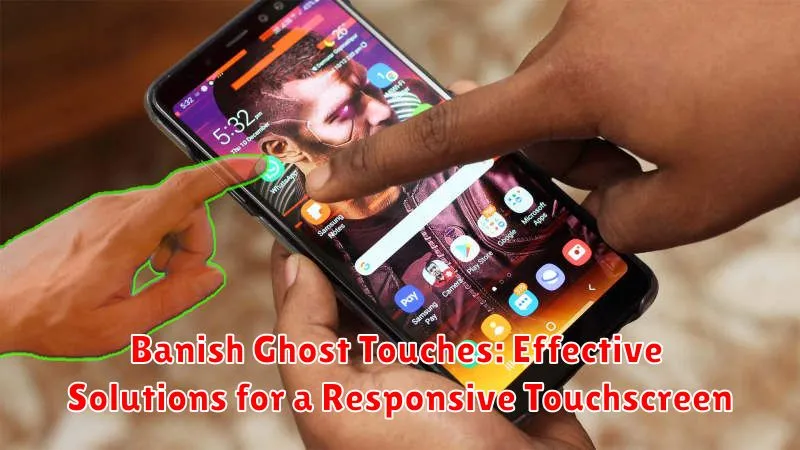Experiencing the frustration of ghost touches on your touchscreen device? These phantom activations, where your screen responds as if touched when it hasn’t been, can severely disrupt your device’s usability. From errant typing and app launching to unintended pocket dials and screen navigation issues, ghost touch problems can make even the simplest tasks a challenge. This article explores the common causes of ghost touches and provides effective solutions to restore your touchscreen’s responsiveness and banish these frustrating phantom interactions for good.
Ghost touches, also known as phantom touches, can stem from a variety of issues, ranging from software glitches and hardware malfunctions to environmental factors and even faulty chargers. Understanding the root cause is key to finding an effective solution. Whether you’re dealing with a malfunctioning digitizer, a software conflict, or simply a dirty screen, this guide offers practical troubleshooting steps and effective solutions to help you reclaim control of your touchscreen and eliminate those pesky ghost touches.
Understanding Ghost Touch and Its Causes
Ghost touch, also known as phantom touch, describes the frustrating phenomenon where your touchscreen registers input without any physical contact. This can manifest as apps opening randomly, the cursor moving erratically, or typing gibberish. It essentially makes your device appear to have a mind of its own.
Several factors can contribute to ghost touch. Electrical interference is a common culprit. Nearby chargers, faulty cables, or even certain types of lighting can disrupt the electrical field around your screen, causing spurious inputs. Software glitches can also be responsible. A corrupted operating system, outdated drivers, or conflicting apps can interfere with the touchscreen’s normal function.
Hardware issues can also lead to ghost touch. A damaged digitizer, the component responsible for registering touch input, can malfunction and generate false signals. Similarly, a cracked screen, even if seemingly superficial, can disrupt the electrical flow within the touchscreen layer, resulting in phantom touches.
Common Culprits Behind Ghost Touch
Several factors can contribute to the frustrating phenomenon of ghost touch. Identifying the root cause is crucial for implementing the right solution. Here are some common culprits:
Environmental Factors
Temperature fluctuations, especially extreme heat or cold, can affect the touchscreen’s responsiveness and trigger ghost touches. Humidity can also interfere with the electrical signals within the screen, leading to erratic behavior. Similarly, a dirty screen with smudges, dust, or debris can disrupt the touch sensor’s ability to accurately register input.
Charger Issues
Using a faulty or incompatible charger can introduce electrical noise that mimics touch input. This is particularly noticeable when the device is charging. Damaged charging cables can also cause similar problems.
Loose Connections
Internal loose connections within the device, particularly those related to the digitizer, can cause intermittent ghost touches. These connections can become loose due to physical impact or wear and tear.
Screen Protector Problems
A poorly fitted or low-quality screen protector can interfere with the touchscreen’s sensitivity and cause ghost touches. Air bubbles or dust trapped beneath the screen protector can also create pressure points that register as unintended touches.
Software Fixes for Ghost Touch Issues
Software glitches can often contribute to ghost touch problems. Addressing these can restore your touchscreen’s responsiveness. Try these software solutions:
Restart Your Device
A simple restart can often resolve temporary software conflicts that may be causing the ghost touches. Power off your device completely, wait a few seconds, and then power it back on.
Update Your Operating System
Ensure your device is running the latest operating system version. Updates often include bug fixes and performance improvements that address touch input issues.
Check for App Conflicts
Recently installed apps might interfere with touchscreen functionality. Try uninstalling recently added apps to see if the ghost touch disappears.
Calibrate the Touchscreen (If Available)
Some devices offer a touchscreen calibration tool within their settings. This can help realign the touch input and resolve inaccuracies.
Factory Reset (as a Last Resort)
If other software solutions fail, a factory reset can restore your device to its original settings. Remember to back up your data before proceeding, as this will erase all information on your device.
Hardware Solutions for Persistent Ghost Touch
If software troubleshooting fails to resolve ghost touch issues, the problem likely lies within the hardware itself. While hardware fixes can be more involved, they often provide a definitive solution. Consider the following options:
Screen Replacement
A damaged or faulty digitizer is the most common hardware culprit behind ghost touch. Replacing the screen is often the most effective, albeit more expensive, solution. Seek professional repair services for this procedure.
Loose Connections
Sometimes, a loose internal connection between the screen and the device’s motherboard can cause ghost touches. If comfortable doing so, you can carefully open the device and check for any loose or disconnected cables. Reconnect any loose cables, ensuring they are securely fastened. If unsure, consult a professional.
Environmental Factors
In rare cases, external electromagnetic interference can mimic ghost touch. Try moving the device to a different location, away from potential sources of interference, to see if the issue persists.
Charger/Cable Interference
A faulty charger or cable can sometimes introduce electrical noise that triggers ghost touch. Test with a different charger and cable to eliminate this possibility.
Preventive Measures to Avoid Ghost Touch

Preventing ghost touch requires a proactive approach to maintaining your device and its environment. A few simple habits can significantly reduce the risk of encountering this frustrating issue.
Environmental Control
Temperature fluctuations and humidity can impact touchscreen sensitivity. Avoid exposing your device to extreme temperatures or excessive moisture. Using your device with wet hands can also contribute to ghost touch, so ensure your hands are dry before interacting with the screen.
Charging Practices
Using certified chargers and cables plays a crucial role. Counterfeit or damaged charging accessories can disrupt the electrical current flowing to the screen, increasing the likelihood of ghost touch.
Screen Protection
While screen protectors offer valuable protection against scratches and cracks, ensure they are compatible with your device and installed correctly. Poorly fitted or low-quality protectors can interfere with touch sensitivity and potentially cause ghost touch. Periodically clean your screen to remove dust and debris which can also contribute to erratic behavior.
Case Compatibility
Similar to screen protectors, ensure your device case is designed specifically for your model. Ill-fitting cases can put pressure on the screen, leading to ghost touch issues.
Testing Your Touchscreen After Applying Fixes
After implementing any of the troubleshooting steps, it’s crucial to thoroughly test your touchscreen’s responsiveness to ensure the ghost touch issue has been resolved. A systematic approach will help confirm the effectiveness of the fix.
Start with basic navigation. Open and close apps, scroll through menus, and try typing a short message or email. Pay close attention to any delayed responses or unintended actions. If the ghost touches persist, revisit the troubleshooting steps or consider more advanced solutions.
A more rigorous test involves using a multi-touch drawing app. These apps allow you to use multiple fingers simultaneously on the screen, providing a comprehensive evaluation of the touchscreen’s sensitivity and accuracy across its entire surface. Look for any erratic lines or unexpected inputs that might indicate lingering ghost touch problems.
Finally, observe your device during regular use for a period of time. This real-world testing is essential to confirm that the fix is sustainable and the ghost touches don’t reappear under normal operating conditions.
When to Seek Professional Repair

While many ghost touch issues can be resolved with the troubleshooting steps mentioned earlier, some instances necessitate professional intervention. If you’ve exhausted all other avenues and your touchscreen remains unresponsive or erratic, it’s time to consider repair.
Physical Damage: A cracked screen or visible damage to your device is a clear indicator that professional repair is required. Attempting DIY fixes in these situations can worsen the problem.
Persistent Issues After Troubleshooting: If ghost touches persist even after trying software updates, factory resets, and environmental adjustments, the underlying cause may be a hardware malfunction requiring expert attention.
Warranty Coverage: If your device is still under warranty, contacting the manufacturer or retailer for repair or replacement is the best course of action. Attempting self-repair might void your warranty.

